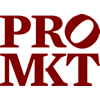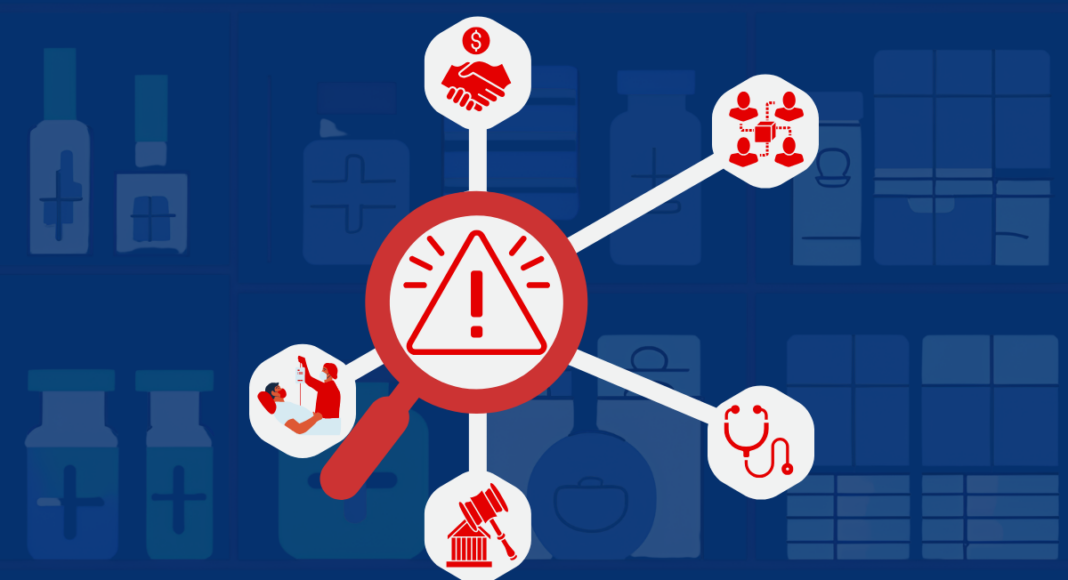Brent Fulton discusses private equity’s investments in hospitals and assesses the risks they present to key stakeholders: private equity investors, debt investors, patients, and the government. He argues financial transparency regulation is needed so fraudulent transfer and bankruptcy laws can be enforced to reduce uncompensated risk borne by patients and the government (ultimately taxpayers).
This article is part of a series that explores if and how private equity reduces competition in the United States healthcare sector and the ways in which regulators can respond. You can read the rest of the series as it is published here.
If you’ve seen the 1987 movie Wall Street, then you wouldn’t want your grandmother admitted to a hospital owned by Gordon Gekko, the leveraged buyout titan who quipped “Greed, for lack of a better word, is good.” But leveraged buyout funds (now called private equity funds) didn’t just survive Wall Street—they’ve thrived—spreading into nearly every corner of the economy, from fitness franchises to fast food, neonatology to nursing homes, hospitals to home health.
Since 1996, the number of publicly financed companies has decreased from 7,300 to 4,300. Meanwhile, the number of private equity-owned companies has increased from 1,900 to 11,200 during the past two decades.
Some of these privately financed companies are hospitals—488 in total, or 8.5% of all private hospitals—that have been acquired by private equity firms. These hospitals can benefit from improved management, lower costs, and access to capital that can be invested in infrastructure, technology, and operations. However, that capital comes at a cost due to the increased risk of default and bankruptcy.
I argue that when private equity firms receive dividends prior to a default or bankruptcy, the lenders—whether through traditional debt or real estate sale-leasebacks—are the stakeholders with a financial incentive to prevent this from occurring because if they do not, they suffer the losses. Notwithstanding, these lenders accept and expect some default risk, which is priced into the debt terms. Hence, given that over 11,000 companies are privately financed, some will default and declare bankruptcy, particularly those involving acquisitions of underperforming companies or those that experience changes in market conditions after debt is issued. Because this risk is also borne by patients and the government, which sometimes bail out distressed hospitals and must enforce fraudulent transfer and bankruptcy laws, it is important for regulators to ensure private hospital financing is transparent.
Which stakeholders benefit from bearing financial risk?
When a private equity firm acquires a company—such as a hospital—the transaction involves two sets of stakeholders. The first are investor stakeholders, including private equity investors, lenders, and company management (who often have equity stakes or options). The second, who are not involved financially or legally in the transaction but are nevertheless impacted, are the non-investor stakeholders, including patients, employees, suppliers, and the government.
Two questions emerge from such an acquisition. The first is whether the stakeholders who stand to gain the most from a private equity investment are the same stakeholders who stand to lose the most. A recent book, These Are the Plunderers: How Private Equity Runs—and Wrecks–America, chronicles several examples in which private equity investors are able to extract wealth, primarily through dividends, even when a company subsequently declares bankruptcy.
However, the underlying issue is often not private equity per se, but instead lenders that are willing to provide debt without covenants that prevent the proceeds from being used as a dividend to equity holders, as opposed to being invested back into the company. This situation could be driven by a debt market that has a surplus of debt capital chasing a scarce number of debt issuers, causing the lenders to lower interest rates and relax covenants. Moreover, after the debt is issued, market conditions might unexpectedly worsen. Lastly, in some cases, the dividends potentially violated fraudulent transfer laws that prohibit transfers to equity holders ahead of other creditors when a company is on the brink of insolvency.
The second question is when an acquisition uses equity that is fully leveraged with debt to amplify potential returns (or losses) to equity investors, from the perspective of non-investor stakeholders, does the benefit of the acquired company having access to additional capital outweigh the additional risk from leverage? Furthermore, are those non-investor stakeholders, particularly patients, compensated for bearing that additional risk, particularly since they are not able to easily diversify it? And because the government will sometimes bail out failing hospitals, is the situation as Senator Bernie Sanders might exclaim: Profits are privatized, but losses are socialized?
Investor stakeholders
In this section, I discuss investor stakeholders, focusing on debt investors because they have been rarely discussed in healthcare private equity financing.
Private Equity Investors
When pension funds, sovereign wealth funds, and high-net-worth individuals invest in a private equity fund as limited partners, the investment accounts for only a small share of their total investments, which are diversified across investment classes. Furthermore, their private equity exposure is spread across several private equity funds that invest in a portfolio of companies, sectors, and strategies. As a result, if some portfolio companies suffer losses or go bankrupt, the impact is diluted, minimally affecting the investors’ overall returns.
Debt Investors
In contrast to private equity investors, the role of debt investors in private equity-backed healthcare deals has received scant attention, with much of the literature stating that private equity firms load companies with debt, as if the debt investors are obsequious to private equity firms. In reality, debt investors range from large banks to private debt funds, the latter with many of the same underlying investors as private equity funds, who are also seeking to maximize their return commensurate with the level of risk. Hence, they conduct an underwriting process to assess the company’s capacity to service the debt, and they negotiate an interest rate and terms commensurate with the risk in the context of debt markets with fluctuating supply and demand for debt.
These lenders have ways to protect their investments—particularly to prevent equity investors from receiving returns that jeopardize debt repayments—such as contractual debt covenants and fraudulent transfer laws. However, lenders relax debt covenants when the supply of debt exceeds the demand. These protections might also be weakened if the lender’s management is heavily compensated for the number and size of debt deals, without adjusting the compensation for the default risk of those deals.
Debt Investor Case Study: Medical Properties Trust
Medical Properties Trust, a publicly traded real estate investment trust, is the most well-known debt-like investor in hospitals owned by private equity firms. MPT provides capital to hospitals by purchasing their real estate and facilities, then leases those assets back to the hospitals in what’s known as a sale-leaseback. Hence, MPT effectively functions as a lender. The sale generates cash for the hospital to invest in capital projects and operations, pay off debt, or distribute a dividend to equity holders.
As compared with loans, sale-leasebacks lower the cost of capital, increase liquidity without adding debt, and offer more predictable financial payments. However, in an already highly leveraged company, the long-term lease obligations can cause financial distress if the proceeds of the real estate sale are not used to improve the company so it can generate sufficient cash flow to pay the lease.
MPT has suffered a few high-profile setbacks in sale-leaseback transactions with hospital systems, including Steward Health (formerly owned by Cerberus Capital Management) and Prospect Medical Holdings (formerly owned by Leonard Green & Partners), both of which filed for bankruptcy in the past year. When these hospital systems sold their real estate to MPT, approximately $1.5 billion of the proceeds were paid as dividends to their private equity owners, even though the systems were not profitable. Moreover, the executives were paid dividends as well, including Steward founder and CEO Ralph de la Torre allegedly receiving $250 million and Prospect Medical Holdings founders, Sam Lee and David Topper, allegedly receiving $195 million.
Although debt-like covenants are not usually used for sale-leasebacks, in theory they could have been negotiated, including affirmative covenants to maintain financial ratios and negative covenants to restrict dividend payouts to the private equity owners. The absence of robust covenants reflects sale-leaseback market forces that produce an equilibrium with few or no covenants.
However, as expected, the market responded, disciplining MPT. These and other distressed sale-leasebacks adversely affected MPT’s stock price and its ability to maintain its dividend. In January 2022, the price reached a high of $24 per share, when it was paying an annual $1.16 dividend per share, but current values (as of mid-March prior to the tariffs’ shock) are 75% less than those highs: the price is about $6 and the dividend is $0.32. This example is emblematic of how losses from distressed sale-leasebacks are borne by the lessor.
However, these examples are atypical for MPT, which owns over 400 health care properties and has generated 139% in total returns since its IPO in 2005, primarily through dividends. Although MPT’s total return is less than the broad-based Vanguard Real Estate ETF that generated 242% in total returns during the same period, if MPT had consistently engaged in sale-leasebacks with health care properties that could not make their lease payments, then it would not have been able to generate those returns. Hence, when done in a financially prudent manner, sale-leasebacks are a viable way for hospitals to raise capital.
Notwithstanding, the human toll of the sale-leasebacks and other mis-management by Steward has been immense. The Boston Globe has been investigating Steward, including identifying 15 patients who allegedly died after not receiving professionally accepted standards of care due to equipment or staffing shortages.
Non-investor stakeholders
The non-investor stakeholders include patients, employees, suppliers and the government, and I will focus on patients and the government.
When a private equity firm acquires a hospital, patients might benefit from improved management, better technology, and lower costs. This financing approach reduces the need for equity capital, taking advantage of debt’s lower cost. However, if a company takes on too much debt, it raises the risk of financial distress by straining cash flow, limiting flexibility, and increasing the chance of default and bankruptcy. Moreover, patients can also be harmed if hospital quality of care—which is often not transparent—is compromised by cost-cutting measures and the need to divert cash flow to service debt payments.
The emerging evidence on the impact of private equity investment in hospitals on quality is mixed, with some studies finding adverse outcomes, including more in-hospital falls and central line-associated bloodstream infections and worse patient experience scores. In contrast, some studies have found improvements, including better process-of-care measures for acute myocardial infarction and pneumonia and lower in-hospital and 30-day mortality for acute myocardial infarction (with no mortality effect on the four other conditions they studied).
The mixed results reflect differences in private equity firms’ strategies and abilities to recruit management. The adverse outcomes are concerning because quality is difficult to observe and measure at the hospital level because of differential patient risk profiles, and adverse outcomes are more likely when hospital staff is reduced, also difficult for patients to observe.
Conversely, the favorable results might be the result of private equity-owned hospitals—relative to nonprofit hospitals—having access to more capital for investments in technology and operations, and being able to attract better management by offering higher compensation. And as compared with publicly traded hospitals—which face relentless pressure to hit quarterly earnings expectations—private equity-owned hospitals have a longer-term horizon, not that different from a nonprofit hospital. After private equity acquires a hospital, the hospital is typically held for 5 to 7 years before its sale, which adds another 3 to 5 years to the horizon because buyers are forward looking.
Reforming public policy to require financial transparency
A local hospital provides essential services that cannot be easily delayed or accessed via another hospital. Hence, the government has a role in making hospital financial risk more transparent because of its effect on operational risk and patients’ access to hospital services.
Moreover, financial transparency is justified because there is a “government put”—akin to the so-called Fed or Trump puts to stabilize plummeting stock markets—when the government bails out financially distressed hospitals, potentially benefiting debt holders and, more rarely, equity holders. Hence, taxpayers are funding bailouts, yet not participating financially in the amplified upside gains from leveraged buyouts. The Steward Health bankruptcy could cost Massachusetts taxpayers $700 million or more—calling Bernie!
As compared with other ownership models, private equity lacks financial transparency, which is needed to ensure that transfers to equity holders, as well as to company management, do not violate fraudulent transfer and bankruptcy laws.
Moreover, the complex financial positions held by private equity funds and their lenders need to be understood because the lenders might be financed by hedge funds that have multiple—sometimes conflicting—hedged bets on the same company. For example, a hedge fund might be long on a company’s bonds while simultaneously holding a derivative that pays out in the event of a catastrophic loss. Such transparency is crucial during bankruptcy negotiations, yet is sometimes lacking—an issue law professor Jonathan Lipson has referred to as “The Shadow Bankruptcy System,” akin to the shadow banking system. This transparency will help prevent private equity firms from extracting value via financial engineering just before a company fails, allowing them to recover capital or generate returns even when the company is no longer viable.
That said, the government should also ensure that the discipline imposed by market forces remains intact because those forces are much more responsive than the government to changing market conditions (changes in patient demand, hospital costs, and new technologies) and those forces are less susceptible to regulatory capture—I may have lost Bernie.
Whether non-profit, for-profit, or private equity-backed hospitals are best suited to deliver health care should be sorted out by the market with regulatory oversight because of the well-known market failures in health care, namely the distortions from a third-party payer, lack of price and quality transparency, and consolidated markets. The winning model will be the one that innovates, integrates new and existing technologies, secures reliable access to capital, and attracts top physicians, allied health professionals, and management—with the ultimate goal of delivering high-quality care at an affordable price. While a few private equity firms have been able to extract their equity investment prior to a company declaring bankruptcy, the return to the limited partners (and even to the general partner) is too low to be a sustainable model.
The reason private equity is under the spotlight is because one of its core competencies is raising capital, including debt, using complex, opaque financial webs to allocate risk. In contrast, the Sisters of Bon Secours, who started the non-profit Holy Family Hospital, which became part of Steward Health and was owned by Cerberus Capital Management, were not steeped in financial engineering, so there was less of need for financial transparency.
Whether private equity-owned hospitals are a competitive model has yet to be determined, but no matter the ownership model, regulation is needed to ensure transparent financing along with price and quality transparency because of the social contract that hospitals have with their communities.
Author Disclosure: The author reports no conflicts of interest. You can read our disclosure policy here.
Articles represent the opinions of their writers, not necessarily those of the University of Chicago, the Booth School of Business, or its faculty.






